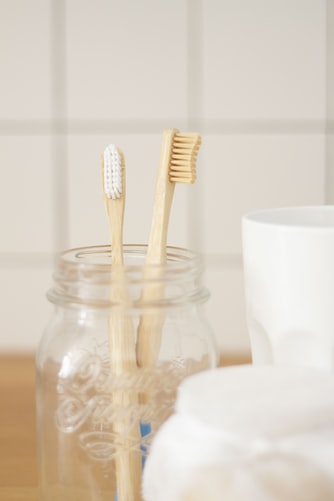
Toss it or wash it? Everyday items that may need our attention
Household items that love to harbor bacteria. Some things you should regularly clean or replace…
Razors
According to the American Academy of Dermatology, you should dry out your razor completely from shave to shave to prevent the growth of bacteria. The AAD recommends throwing away disposable razors after five to seven shaves. *Don’t keep your razor in the shower?
Hand Towels
Hand towels, dish towels and washcloths should be washed frequently with hot water.
If your towels are white, you can add a cap full of bleach to the wash, too.
Toothbrush
Compared to other household items, the toothbrush isn’t that germy
Still, it’s important to replace toothbrushes frequently (every three to four months), according to the American Dental Association and immediately if someone in your home has a virus. However, your toothbrush holder can get real gunky!
Liquid Makeup
Make sure you wash your hands before handling liquid foundation and concealers to prevent spreading germs and toss your liquid makeup after about six months.
Mascara
Replace your mascara every couple of months and never, ever share eye makeup.
Makeup Sponge
Clean your sponges regularly, and replace them about every three months.
Pet Bed
Look for a machine-washable bed, or one with a removable cover.
Pet Toys
When was the last time you washed your pet’s toys? Toys with little nooks and crannies are the perfect home for mold and yeast.
Contact Lens Case
It’s best to replace the case occasionally. And always wash your hands before handling contacts and putting them onto your eye.
Cutting Board
According to the NSF study, your cutting board is dirtier than your toilet seat. Every cut made in the cutting board creates a tiny home for bacteria to breed. If you’re using a plastic cutting board, swap out for wood as most wood cutting boards have resins that are antibacterial?
Kitchen Sponge
Most people think the bathroom is the germiest place in the house, but according to a swab study from the NSF, it’s actually the kitchen. The germiest item in the kitchen = Your dish sponge. The kitchen sponge outranked all other household items for staph, mold, yeast and Coliform bacteria. Disinfect your sponge every other day by microwaving it on high for one or two minutes. Replace every two weeks.
Bathmat
Like bath towels, bathmats are constantly exposed to damp, dark environments (excellent conditions for bacteria).
Use a cloth bathmat that can ‘easily be washed and dried completely!
Coffee Maker
The coffee maker made NSF’s top 10 germiest items list and outranked the toilet seat with more Coliform bacteria.
Even if you toss the coffee filter and grounds immediately after making coffee, the reservoir can still breed bacteria. Make sure to keep the lid up after making coffee to help the reservoir dry out.
Lunchbox
It may not seem like something to clean frequently—especially since food is often wrapped inside—but the lunchbox can harbor a lot of germs. Food waste mixed with thawed ice packs create a great home for mold.
Bed Pillows
Pillows can harbor dust mites, dead skin cells and body oils. Most pillows can be thrown in the washer, but if not, it’s time to replace.
If you suffer from bad allergies, try replacing or cleaning your pillows every couple of months.
Baseball Cap
Dust, dirt, oil from skin and hair, sweat, lotion and conditioners can leave your baseball cap looking less than new in no time.
Hats and baseball caps will last longer with routine cleaning and washing.
Shower Head Filter
Your shower head itself could be shiny and spotless on the outside, but if this interior of the shower head isn’t sanitized every couple of months, you’re not getting the healthiest, cleanest water.
Apple AirPods
Dirt, dust and wax routinely come into contact with your Apple AirPods (or any headphones).
Use a microfiber cloth and toothpick for regular cleaning. All that gunk wreaks havoc on performance as well.











